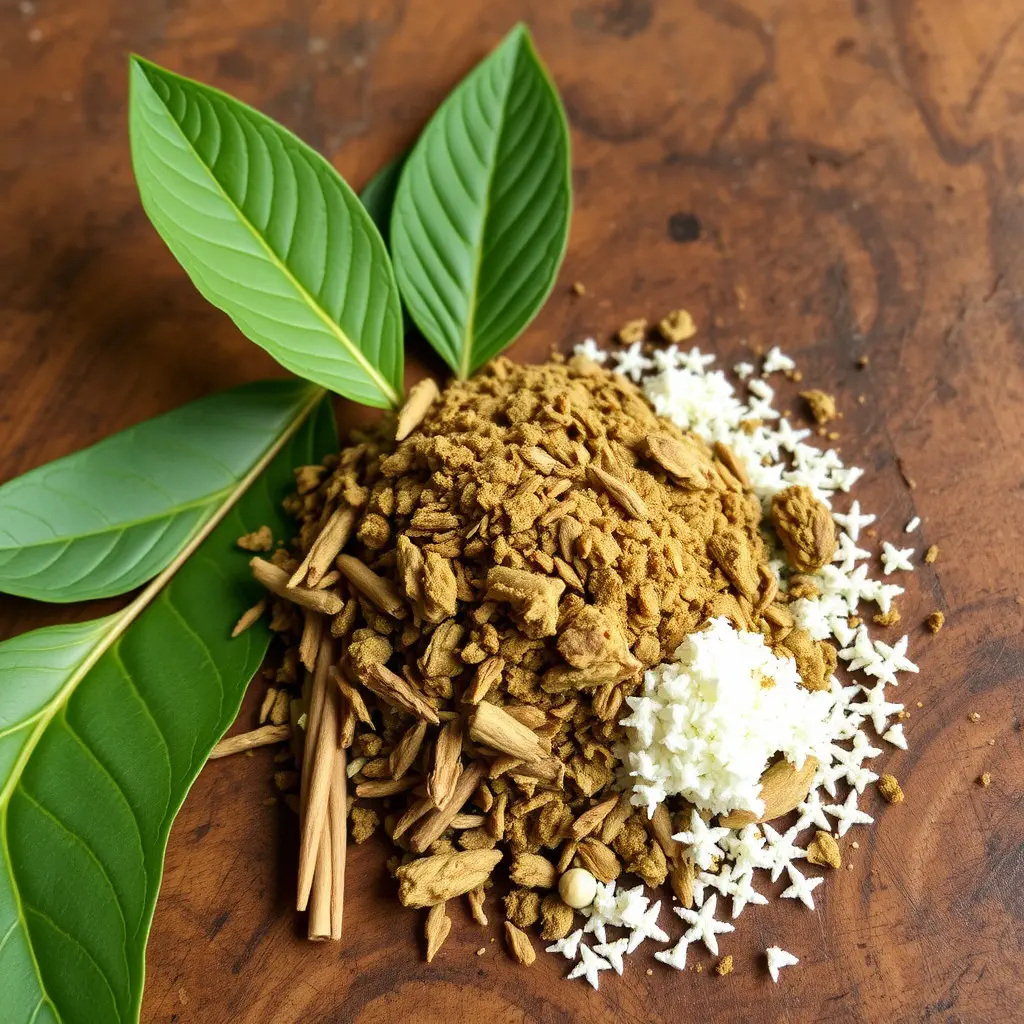Indiana's legislature has clarified the legal status of kratom, a supplement derived from the Mitragyna speciosa tree, which contains alkaloids like mitragynine and 7-hydroxymitragynine. These compounds interact with opioid receptors in the brain, potentially influencing athletic performance. The Indiana Kratom Law provides a clear framework for athletes to explore kratom's benefits within sports training, emphasizing compliance with state regulations. Athletes and coaches must stay informed about this law to ensure safe and legal use of kratom, which includes adhering to dosage guidelines, understanding strain differences, and avoiding combination with other substances. Personalized dosing is key, and labeling of mitragynine content per package is mandatory under the law. Athletes should consult healthcare professionals or specialized kratom coaches to navigate legal use, monitor physiological responses for performance enhancement, and maintain compliance with the Indiana Kratom Law, which ensures that they can responsibly utilize this supplement as part of their athletic regimen.
Exploring the intersection of natural supplementation and athletic prowess, this article delves into how kratom coaching can be optimized for performance enhancement within Indiana’s legal parameters. We will navigate the complexities of crafting a personalized kratom regimen that adheres to the Indiana kratom law, ensuring athletes achieve their peak potential without compromising compliance or safety. Join us as we explore the nuances of integrating kratom into sports training, providing insightful guidance for those looking to leverage this unique resource while remaining within the bounds of Indiana’s regulations.
- Understanding Kratom and Its Role in Athletic Performance Enhancement Within Indiana's Legal Framework
- Crafting a Personalized Kratom Regimen for Athletes: Dosage, Strains, and Safe Practices in Compliance with Indiana Kratom Law
- Navigating the Nuances of Kratom Use in Sports: Compliance, Monitoring, and Integration with Training Programs Amidst the Indiana Kratom Law
Understanding Kratom and Its Role in Athletic Performance Enhancement Within Indiana's Legal Framework

In Indiana, athletes looking to optimize their performance may explore the potential benefits of kratom, a natural substance derived from the leaves of the Mitragyna speciosa tree native to Southeast Asia. Kratom is known for its various effects on the body, primarily due to its alkaloids, such as mitragynine and 7-hydroxymitragynine, which can influence the brain’s opioid receptors. Understanding kratom within the context of athletic performance enhancement requires a nuanced approach, considering the complex interplay between its pharmacological properties and the physical demands of sports. In Indiana, the legal status of kratom is clearly defined; it is legal at the state level, as per the Indiana kratom law, which distinguishes it from substances with stricter regulations or complete bans in other jurisdictions. This legal clarity allows athletes and coaches in Indiana to consider kratom as a potential supplement in their regimen, provided it aligns with their performance goals and adheres to any athletic governing body’s guidelines on supplement usage. Coaches who utilize kratom as part of their performance enhancement strategies must be well-versed in the Indiana kratom law to ensure compliance and safety. They should also stay informed about the evolving research on kratom, which could impact its legal status or influence the recommendations for its use in athletic training and competition.
Crafting a Personalized Kratom Regimen for Athletes: Dosage, Strains, and Safe Practices in Compliance with Indiana Kratom Law

Crafting a personalized kratom regimen for athletes requires careful consideration of the Indiana Kratom Law and adherence to safe practices. The mitragynoid alkaloids present in kratom can influence athletic performance by modulating pain, fatigue, and mood, but it is imperative to navigate this territory with caution. Under the Indiana Kratom Consumer Protection Act, specific guidelines are established to ensure the safety and legality of kratom use. Athletes interested in incorporating kratom into their routine should first consult with a healthcare provider or a kratom coach knowledgeable in the nuances of the law and its implications for performance enhancement.
When tailoring a kratom regimen, dosage is a critical factor that must be individualized based on an athlete’s unique metabolism, tolerance, and physiological response. The Indiana Kratom Law mandates that kratom products be labeled with specific information, including the amount of mitragynine per package. This regulation helps users understand the potency of their kratom and aids in dose determination. Strain selection is also significant, as different strains can offer varied effects; for instance, Maeng Da and Bali strains are often favored for their stimulating properties, while Indo or Red Vein strains may be preferred for relaxation and pain relief post-exercise. Safe practices include starting with a low dose to gauge individual sensitivity, avoiding mixing kratom with other substances, and strictly adhering to the dosing limits set forth by the law to mitigate the risk of adverse effects and ensure compliance with regulations.
Navigating the Nuances of Kratom Use in Sports: Compliance, Monitoring, and Integration with Training Programs Amidst the Indiana Kratom Law

Navigating the use of kratom in athletic performance requires a careful consideration of legal frameworks, physiological monitoring, and integration with training regimens. The Indiana Kratom Law plays a pivotal role in this context, as it outlines the permissible conditions under which kratom can be used by athletes. Coaches and athletes must familiarize themselves with this legislation to ensure full compliance and avoid any legal repercussions. The law delineates acceptable dosages and formulations, thereby allowing for its use within a structured training program. To optimize athletic performance with kratom, it is imperative to monitor its effects on the athlete’s physiology, including pain management, stamina enhancement, and overall well-being. This monitoring should be conducted in tandem with the athlete’s training intensity and volume to prevent any adverse impacts on performance or health. Coaches must tailor kratom integration into training programs based on individual responses and the specific demands of their sport, ensuring that the use of this mitragynine-containing plant aligns with the athlete’s goals and the guidelines set forth by the Indiana Kratom Law. This nuanced approach to kratom coaching is essential for athletes seeking to leverage its potential benefits while maintaining the integrity of their athletic pursuits under the watchful eye of state regulations.
In conclusion, the strategic use of kratom as a performance enhancer for athletes within the guidelines set forth by the Indiana kratom law offers a promising avenue for those seeking to optimize their athletic capabilities. By understanding the intricacies of kratom’s effects and adhering to a personalized regimen that aligns with state regulations, athletes in Indiana can safely integrate this supplement into their training routines. It is imperative that coaches and athletes alike stay informed on the evolving legal landscape surrounding kratom to ensure compliance and maximize the potential benefits for athletic performance enhancement. As research continues to emerge, it is clear that when used responsibly and legally under the Indiana kratom law, kratom coaching can be a valuable component of an athlete’s training regimen.






